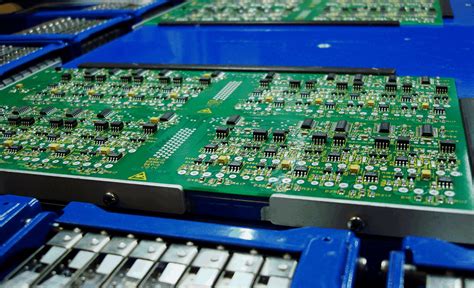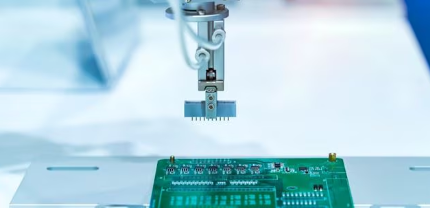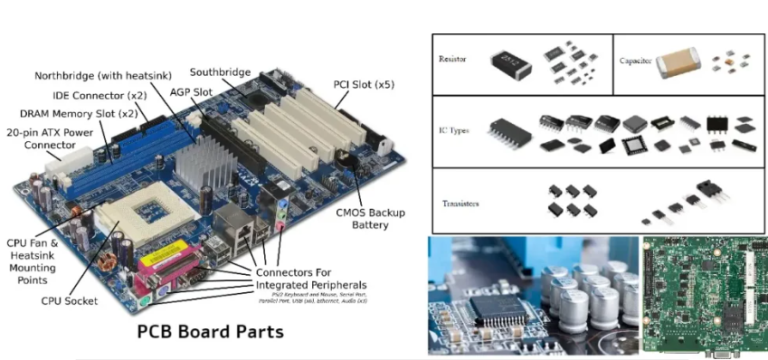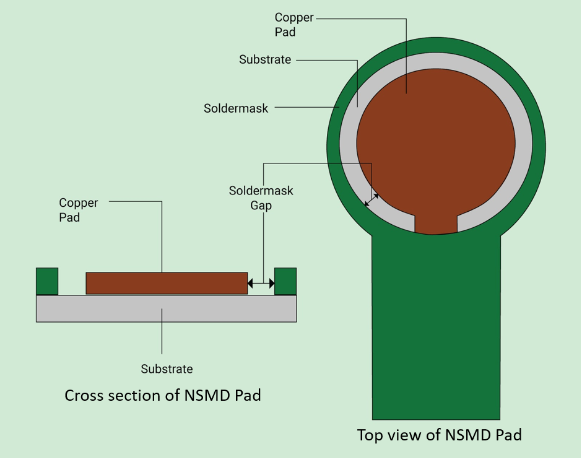Unlocking the Secrets: Understanding Blank PCB Board Prices
Key Takeaways
Understanding the blank PCB board price can significantly enhance your decision-making when embarking on electronic projects. Several pivotal factors influence PCB manufacturing costs, one of the primary being the selection of materials. Different substrates, such as FR-4, polyimide, or aluminum, come at various price points and can dictate the overall cost of production. Furthermore, the complexity of your design plays a crucial role; intricate layouts can increase labor and machining requirements, thus inflating manufacturing expenses.
Additionally, the processes utilized by PCB manufacturing companies add another layer to cost considerations. Advanced techniques like surface mount technology (SMT) or multilayer assembly may raise prices compared to simpler fabrication methods. A comparison of prices across various PCB types reveals that not all boards are valued equally—specialty boards might command higher prices due to their unique properties or limited availability.
Other elements that might impact your budget include order volume and lead times; larger orders often attract bulk pricing discounts, while expedited services could lead to increased costs. By grasping these factors—including the nuances of the PCB manufacturing business—you’ll be better prepared to establish a budget that aligns with your project’s requirements and expectations while ensuring efficient allocation of resources.
Introduction to Blank PCB Board Pricing
Understanding blank PCB board pricing is crucial for those involved in electronics or related projects. Several factors contribute to the costs associated with these boards, and being aware of them can help you make more informed decisions. One of the primary factors influencing pricing is the material quality used in PCB manufacturing. Higher-grade materials tend to increase durability and performance but also raise costs.
Moreover, the complexity of your design can significantly affect the overall PCB manufacturing cost. Intricate designs necessitate more advanced technology and additional layers, leading to higher expenses from PCB manufacturing companies. This means that a straightforward circuit design will likely be more budget-friendly compared to a multifaceted one.
In addition, different PCB types, such as single-sided or double-sided boards, have varying price structures due to their distinct manufacturing processes. Understanding these differences allows you to explore options that align with your budget while still meeting project requirements.
As you assess your specific needs and evaluate costs, consider using quotes like this as a guide:
“Choosing the right materials and keeping designs simple can save you significantly on your PCB manufacturing business expenses.”
Ultimately, this knowledge empowers you to navigate the multifaceted landscape of blank PCB board pricing effectively, ensuring you can maximize both performance and value in your electronic projects.
Materials Impacting Blank PCB Costs
When considering the costs associated with blank PCB boards, one of the primary factors is the materials used in their production. Understanding these materials is essential for you to navigate the pcb manufacturing landscape effectively. The quality and type of materials directly impact both the pcb manufacturing cost and ultimately, your project’s budget. For instance, standard FR-4 epoxy resin is a popular choice due to its affordability and durability, but if you require high-frequency performance, you may need to invest in specialized materials like PTFE or Rogers substrates that are significantly more expensive. Furthermore, pcb manufacturing companies often offer different grades of copper for traces that can also influence costs. Higher-quality copper can enhance conductivity but raises the overall manufacturing cost. Additionally, the choice between single-layer and multi-layer PCBs also affects material requirements—multi-layer boards need more materials and intricate designs, leading to higher overall costs in your pcb manufacturing business setup. By comprehensively examining these material aspects, you are better equipped to make informed decisions that balance performance with budgetary considerations in your electronic projects.
The Role of Design Complexity in Pricing
When considering the pricing of blank PCB boards, one of the most significant factors to take into account is the design complexity. The more intricate a design, the more challenging it is for PCB manufacturing companies to produce. Complex designs often require additional layers, elaborate routing, and specialized components, all of which contribute to a higher PCB manufacturing cost. If you plan to implement advanced features such as multi-layered boards or high-density interconnections, it’s essential to understand that these elements can substantially impact your budget.
Moreover, design complexity also affects the manufacturing processes involved. Each additional layer or intricate design pathway can increase the time and expertise required from engineers and technicians during the PCB manufacturing phase. This extra labor and time directly translate into higher costs for your project.
To keep expenses manageable while still achieving your desired functionality, it’s wise to balance aesthetic desirability with practical engineering requirements. Seeking out experienced PCB manufacturing companies who can offer competitive rates may provide you with additional insights into how specific design choices influence overall expenses. Investing in a well-thought-out design could save significantly in production costs down the line while ensuring quality results that meet your project’s needs.
For further insights on how various factors influence your PCB costs and how to make informed budget decisions for your pcb manufacturing business, consider exploring resources from experts in the industry.
Manufacturing Processes and Their Influence on Prices
When delving into the world of blank PCB board prices, it is crucial to understand the various manufacturing processes that can significantly alter pcb manufacturing costs. Different pcb manufacturing companies employ a range of methods, each with its own set of complexities and efficiencies. For instance, standard processes like etching and drilling can be more cost-effective than advanced techniques requiring specialized equipment or materials. Additionally, the scale at which a pcb manufacturing business operates plays a significant role; larger operations benefit from economies of scale, often leading to lower prices for bulk purchases. Conversely, smaller runs might incur higher per-unit costs due to less efficient production workflows. Moreover, as you explore options for producing PCBs, consider how intricate designs can influence not only material usage but also the type of machinery required for production; complexity in design often translates to increased labor and time investment, further impacting final pricing. Understanding these intricacies allows you to anticipate costs better and make more informed choices in your electronic projects.
Comparison of Prices Across Different PCB Types
When evaluating the prices of blank PCB boards, it’s essential to understand that not all types are created equal. PCB manufacturing companies offer various types of boards that cater to different requirements and specifications, which can significantly influence pcb manufacturing cost. For instance, standard single-layer boards tend to be less expensive compared to multi-layer or high-frequency PCBs, which require more complex production processes and advanced materials. The distinction in pcb manufacturing business operations also plays a critical role in pricing, as companies with state-of-the-art technologies or specialized capabilities may charge a premium for their services. Additionally, factors such as order volume and customization can modify the overall costs; bulk purchases often lead to discounts. Therefore, by comparing prices across different PCB types and understanding how each variant impacts your project’s financials, you can make insightful decisions that maximize your budget while meeting your project’s specific needs. Understanding these nuances will empower you to navigate the market more effectively and choose the right supplier for your particular requirements.
Additional Factors Affecting Blank PCB Board Prices
When delving into the dynamics of blank PCB board pricing, it’s essential to consider several additional factors that can significantly impact pcb manufacturing costs. For instance, the scale of your order can lead to variation in prices; large-volume orders often benefit from bulk discounts offered by pcb manufacturing companies. Furthermore, regional differences in manufacturing capabilities and labor costs may affect pricing. For those venturing into the pcb manufacturing business, understanding supply chain constraints is crucial, as delays in parts or materials can increase overall costs, thereby affecting the pricing of blank PCB boards. Additionally, technological advancements in production processes may lead to fluctuations in pcb manufacturing costs, as newer and more efficient methods could either lower or increase prices depending on their adaptability and implementation in different facilities. Lastly, keep an eye on market trends and currency fluctuations as they can influence material availability and pricing strategies across the globe. By meticulously evaluating these factors, you can make more informed decisions regarding your electronic projects while optimizing your budget for any future pcb manufacturing endeavors.
Tips for Budgeting Your PCB Projects
When embarking on your PCB projects, understanding the costs associated with the blank PCB boards is crucial for effective budgeting. One of the first steps is to evaluate the overall pcb manufacturing cost, which encompasses various factors, including materials, design complexities, and the efficiency of different pcb manufacturing companies. As you explore your options, consider how these elements can impact your project’s financial viability. For instance, opting for higher quality materials may lead to increased initial costs but could save you money in the long run by reducing failures or replacements. Similarly, more intricate designs may require specialized pcb manufacturing techniques that are pricier but ultimately necessary for achieving your desired functionality.
It’s also wise to gather quotes from multiple pcb manufacturing companies to get a better sense of competitive pricing and identify where you might cut costs without compromising on quality. Incorporate a buffer in your budget for unexpected expenses that can arise during the project lifecycle. This proactive approach ensures that you can effectively manage your funds while still achieving a high standard in your electronic pursuits. As you analyze various options and strategize around the pcb manufacturing business, keeping all these factors in mind will empower you to make informed financial decisions as your project progresses.
Conclusion: Making Informed Decisions on PCB Investments
In today’s market, understanding the nuances of blank PCB board prices is crucial for any electronics project you undertake. With many factors impacting the pcb manufacturing cost, it’s essential to analyze the different elements that contribute to your final investment. Companies specializing in pcb manufacturing often have varying pricing models based on their unique manufacturing processes and materials used. For instance, high-quality materials might lead to increased prices, but they can also enhance the performance and durability of your final product. Additionally, the complexity of your design can significantly affect costs; simpler designs usually incur lower fabrication expenses compared to intricate layouts requiring advanced techniques. By comparing pricing strategies across various pcb manufacturing companies, you can identify competitive rates that align with your budget without compromising on quality. Understanding these dynamics aids you in making smarter decisions for your pcb manufacturing business, ensuring that every dollar spent maximizes both value and functionality in your projects.
Conclusion: Making Informed Decisions on PCB Investments
In the world of PCB manufacturing, understanding the various factors that influence blank PCB board prices can significantly impact your project’s success and budget. By delving into the intricacies of material costs, design complexity, and the specific processes employed by PCB manufacturing companies, you’re better equipped to navigate the marketplace. Monitor the pcb manufacturing cost closely, as it varies widely based on these elements. Additionally, staying informed about emerging trends in the pcb manufacturing business can provide you with insights into cost-saving strategies and best practices. Ultimately, making informed decisions is paramount; whether you’re choosing a supplier or determining your project budget, having a solid grasp of these pricing dynamics will lead you to invest wisely in your electronic endeavors.
FAQs
What are the main factors affecting the price of blank PCB boards?
The price of blank PCB boards is influenced by several factors, including material costs, manufacturing processes, and design complexities. These elements collectively shape the pcb manufacturing costs, impacting how much you will pay for your PCBs.
How can I estimate my PCB manufacturing cost?
To estimate your pcb manufacturing cost, consider the materials you need, the complexity of your design, and any specific requirements you may have. By assessing these components carefully, you can attain a reasonable estimate tailored to your project.
What types of materials affect blank PCB board pricing?
Materials such as copper, FR4 (a common substrate), and various coating options contribute significantly to pricing. Selecting high-quality materials might raise costs but can enhance performance in your final product.
How does design complexity influence prices?
Typically, the more complex your PCB design is, the higher the cost will be. This often involves intricate layouts or multiple layers which might require advanced pcb manufacturing technologies and more time in production.
What should I expect when working with different PCB manufacturing companies?
Different pcb manufacturing companies may have varied pricing structures based on experience, technology used, and volume discounts. It’s essential to compare quotes from multiple sources to ensure you get competitive rates.






